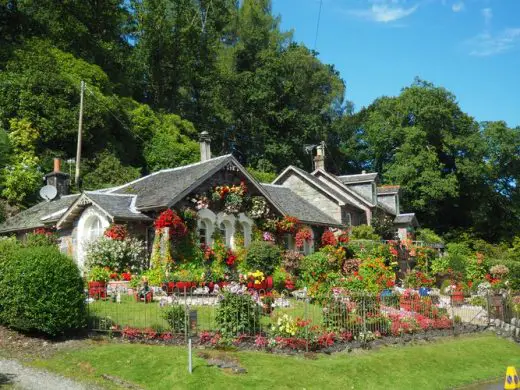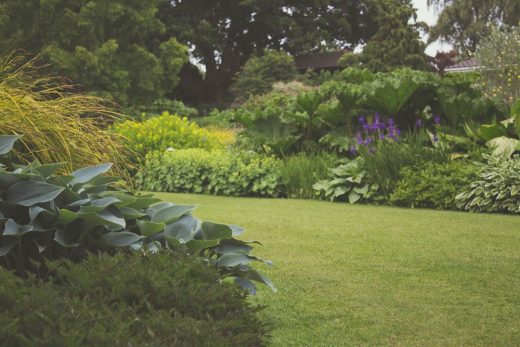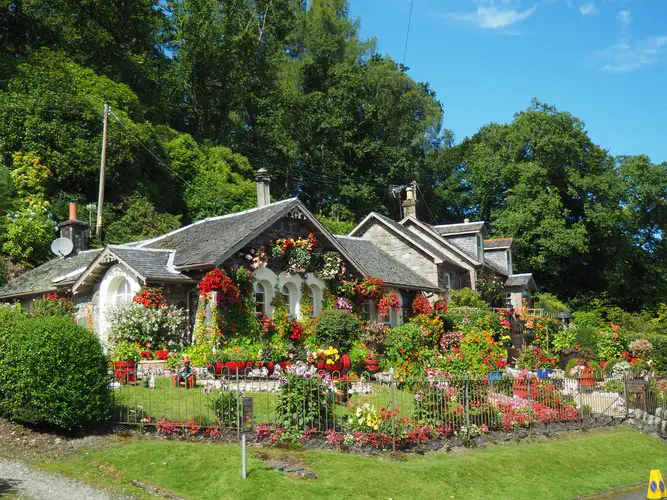15 Garden Design Ideas for Outdoor Space Tips, Property Landscape Guide, Real Estate
15 Garden Design Ideas To Make The Most Of Your Outdoor Space
30 June 2020
Making your outdoor space come alive and become vibrant is a wonderful project that you can start at any time. Not only does it enhance the aesthetic appeal of your home, but it also creates a relaxing and pleasant scenery that greets you every time you step out of your home.
Designing your garden can be tricky if you are starting from scratch, but the internet has plenty of resources that guide you and provide you inspiration for making the most of your outdoor space. To get your creative juices pouring, we’ll share 15 garden design ideas to inspire you to make your own remarkable garden.

image source : https://unsplash.com/photos/N-lK5xhXIug
1. Consider Your Lawn Dimensions
First and foremost, you should familiarize yourself with the size of your lawn, its boundaries, and how much space you want to use up for your gardening project. Having a clear idea of your lawn dimensions can let you effectively envision and plan out the ideal garden design that fits your style and preference. A helpful tip from WhatShed.co.uk is to dedicate a space for a garden shed to be built on. Having a garden shed that is easily accessible is a practical idea, no matter the size of your lawn. You’ll need easy access to your gardening tools and having a shed just for keeping gardening essentials and for temporary respite can make your gardening experience enjoyable.
2. Plan Your Garden Theme and Style
Starting a garden may be your personal project or a joint project with your loved special someone or your family. Thus, consider the needs and preferences of those who will be using the garden. There is much room to explore when it comes to garden themes, and these themes and styles can be combined and modified according to the distinct tastes of the users. You can combine a vegetable garden with a flower garden or share a water garden with an organic garden. While it is ideal to have a single garden theme, it’s also refreshing and interesting to have two different garden themes coexisting harmoniously.
3. Pay Attention to Trees
Trees can play a valuable role in the garden environment in the long-term. It has versatile functions no matter the maturity stage it currently has in your lawn. A mature tree that is found in your garden is a good natural canopy for blocking out the sun and protecting planted garden seedlings that are sensitive to prolonged sun exposure. It can also be a good spot for placing hanging decorations, shade sails, and other overhead or hanging installations. Best of all, mature trees help maintain a natural ecosystem for birds and insects and also provide protection from pollution by converting carbon dioxide to oxygen.
4. Install Secure and Attractive Paving
No matter how limited your outdoor space may be, giving attention to your paving is important not just for you and your fellow home occupants, but for your visitors as well. It provides a welcoming atmosphere while also gives a steady and secure footpath for those who want to explore your garden. Style and elegance of pavings may be great aesthetically speaking, but ensure that the pavers have enough traction and planted securely on the ground to keep yourself and others safe. Also, keep in mind to place the pavings slightly inclined to avoid water pool accumulation and unsightly puddles during rains or when you are watering the garden plants. to discover how much a new patio may cost, use a patio cost calculator.
5. Take Overhead Clearance into Account
If your garden design includes the installation of pergolas, arbors, or archways, Make sure that these can be cleared by anyone. A good headroom ensures the safety of garden visitors, as having a low overhead clearance can pose a risk for head injuries by these installations. The clearance should also take into account the upward arm reach, as some people who accidentally snag them are or hands can cause these installations to fall down.
6. Adapt to Uneven or Sloped Surfaces
When it comes to the natural surface orientation of your lawn or outdoor space, the best adjustment you can do is to adapt to its natural feature. Some lawns can have uneven surfaces and some may have sloped surfaces. Instead of spending big on leveling out the landscape, you can keep the natural orientation and consider using stone steps or grass treads. Another good adaptation is transforming your garden area into a decked garden. The installation of decks that have levels or steps can give the illusion of an evened out surface, while also enhancing the aesthetics of your garden.
7. Consider the Walkway Space
Regardless of the size of your garden, you should also consider the comfortable passage of your guests. No one likes a cramped walkway and having to squeeze through a narrow space, so make sure that your pathways are comfortable enough to pass through. For small gardens, keep at least a 3-foot width walkway space for a single person to pass through or for multiple visitors to walk in a single file. If your garden has enough space, make a pathway that’s at least 5 feet wide to give way for 2 people or more to walk side by side.
8. Take into Account the Elbow Room
If you are planning on holding regular gatherings in your garden, make sure that your deck or patio has enough space for dining and social interactions. Take into account how many guests you usually receive in your garden space. Ideally, there should be at least 3 feet wide allotted for elbow room so that you and your guests can comfortably mingle with each other. If your outdoor space can accommodate outdoor dining, allocate the same distance between and round the outdoor furniture in your patio or deck. Good circulation and unhindered movement are key to having an outdoor garden that serves as a reception and dining area for guests.
9. Manage your Garden’s Vegetation Growth
Different garden owners have their own preferences when it comes to how lush they want their gardens to be. Some prefer to leave patches of the ground or rocks visible, while others like to make their gardens thoroughly covered in green. If you prefer the latter and want a luscious, green and dense landscape, you’ll need to make sure that you relocate or move some of your plants as they grow and mature. Also, keeping grasses that are slow-growing and not nutrient competitors to your garden plants can keep the green spell throughout the year. Grasses like fine fescue, bermudagrass, or Kentucky bluegrass are great fillers that keep spaces between your plants green.
10. Be Keen with Plant Distances
If your garden has multiple plants, make sure that they have sufficient distances away from each other. Good spacing prevents uneven plant growth due to nutrient competition and will keep your plants growing consistently in a controlled environment. Tall plants can make great centerpieces or corner plants depending on the short plants you have in the garden. Transferred plants and newly planted seedlings can be sensitive to sun exposure, so you can place them close to tall plants for shade and protection.
Also, tall plants should not be planted near walls, patio edges, and walkways as they can make these spaces look restricting and cramped. Thorny plants such as roses, bougainvillea, and succulents should be placed away from walkways and locations in the garden that have high traffic. Also, the distancing of fragrant flowers can help you discern certain scents emitted by your flowering plants without them getting mixed up and becoming pungent. The harmony in the scents can be relaxing and calming, and it’s good that you get to smell your flowers individually.
11. Have a Garden for all Seasons
If you want your garden to have a year-round appeal, then you should consider looking beyond flowers and blooms, but also on other ornamental assets of plants such as their fruit, bark, or foliage. Spring and summer can be the best seasons for flowering plants to showcase their flowers in full bloom, but you need to have other attractive plants to keep your garden vibrant even through fall and winter. Plants like chrysanthemums, cyclamens, winter jasmines, and snapdragons are just a few among your choices for fall and winter bloomers. Having these plants in your garden can give color and beauty to your garden no matter the season.
12. Adapt Urban Gardening Methods
Not having a yard or outdoor space in the big city shouldn’t curb your gardening enthusiasm. It calls for an extra boost of creativity if you really want to have a garden of your own in your urban abode. Your patios and balconies can make excellent alternatives for a garden setting and your old plastic bottles and containers such as buckets and window boxes can make great planting areas for flowers. Your flat rooftop isn’t just a place for drying clothes or for birds and rainwater to settle on, it can be an awesome place for starting a garden. Be sure to choose plants that can withstand constant sun exposure or choose hardy tall plants and shrubs are natural sun shields for your small flowering plants.
12. Integrate Garden Ornaments
Your creativity when it comes to your garden should not be limited to your plants. Ornaments can bring out an enhanced visual presentation of your garden and can even improve the real estate value of your home. Take inspiration from Japanese zen gardens when it comes to adding water features and stone accents. The Japanese like to blend harmony between various elements, like water, wind, and earth in the case of gardens. Hearing the trickle of water can give a relaxing feeling and a sense of constant motion, which are good qualities to add to your garden.
13. Future-proof Your Garden
Depending on your commitment and dedication to your garden project, your garden can stay for an indefinite period of time. Your future plans for your garden may not be in place yet, but you can take advanced measures should you have new plans for your garden in the future. One such measure is to build electrical conduits and irrigation piping below the ground. You can choose to strategically place these installations near garden bed edges or near walkways. In the future, you’ll be glad to know that you had them installed. When you decide to install lightning or irrigation, later on, you’ll be finding it easy to do so, without having to drastically change your garden landscape. There can be various issues with garden drainage, and to have your garden look beautiful and free from waterlogged garden. You can get this done from professional plumbers like BDS Drainage.
14. Extend Your Garden to Your Walls
Your walls shouldn’t just stay as lifeless boundaries for your home and yard. Your gardening project can help transform your walls or fences into living walls. Incorporating vertical planting methods and allowing vegetation to grow on your walls in a controlled state can all give your walls a refreshing appeal. There are various ways you can incorporate plants into your walls, such as hanging pots, attachable wall pots or using trellises for climbing plants and wall shrubs. Verdant walls create an illusion of infinite greenery and the feeling of being wrapped in mother nature’s hands.
15. Make Your Garden Wildlife-friendly
One of the most important things to consider with your garden design idea is the impact it will make on the environment and wildlife. Your garden should be designed to attract insects, birds, and small mammals. Not only do they improve your garden scenery, but you are also providing these creatures an additional safe haven and a place they can frequently visit. Select bee-friendly flowering plants and install bird feeders on your garden trees, rare fruit trees or fences. Also, speak with your neighbors and convince them to open up a hedgehog highway. This way, your garden will become popular not only to human visitors but also to various creatures.

image source : https://www.pexels.com/photo/garden-7283/
Your garden can be an area where your passion for planting can take roots and grow. When it comes to designing your garden, it is you as the user and cultivator who knows what design best suits your needs, preference, and lifestyle. These three elements are essential things to keep in mind, whether you are undertaking your garden design project solo or with a partner. Taking these factors into consideration, you are well on your way to making a garden design that can have a positive effect on you as a person, on your property, and on the environment.
Comments on this guide to 15 Garden Design Ideas for Outdoor Space article are welcome.
Gardens
Gardens Posts
5 Reasons To Consider A Greenhouse in Your Garden
5 benefits of owning a garden room
Landscaping and garden design ideas for your outdoors
Tips For an Easy Garden Clearance
Residential Property
Contemporary Property Articles – architectural selection below:
Comments / photos for the 15 Garden Design Ideas for Outdoor Space Guide page welcome





